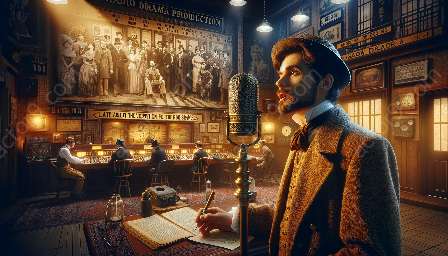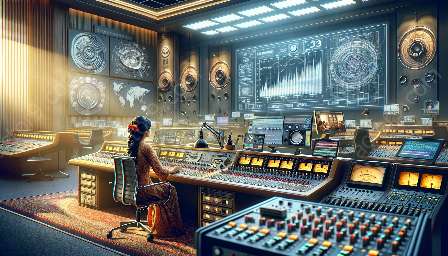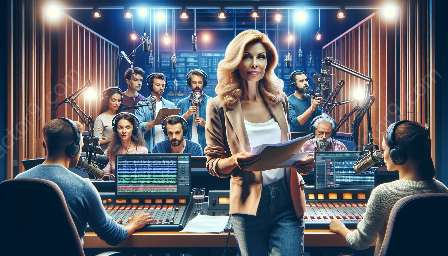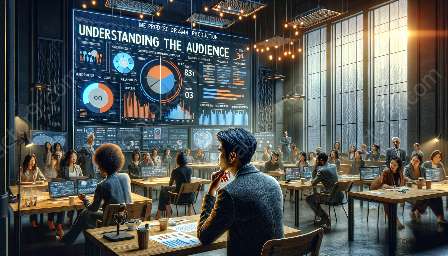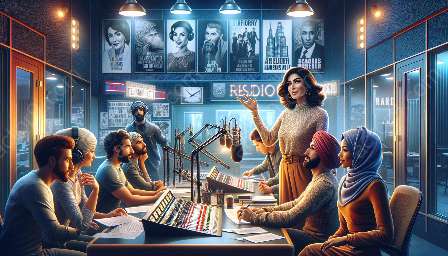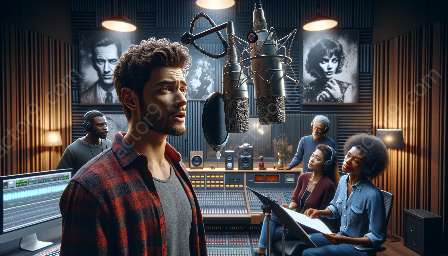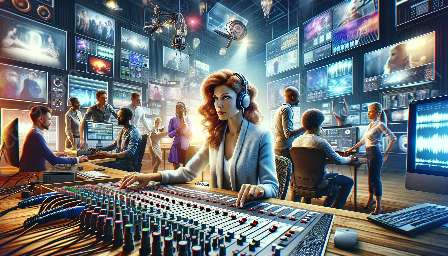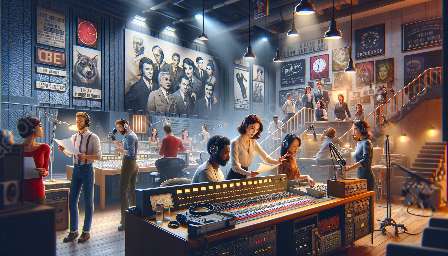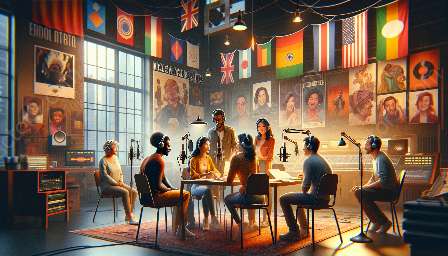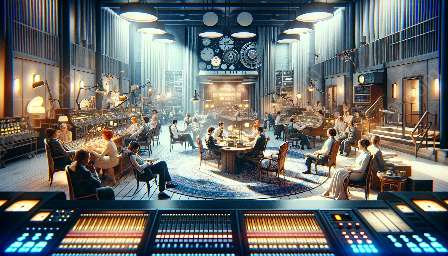Radio drama production and live theater performances are two distinct forms of storytelling that require different approaches and techniques to engage their audiences. In this article, we will delve into the key differences between these two mediums and how understanding the audience in radio drama production plays a crucial role in creating captivating content.
Medium of Expression
One of the fundamental differences between radio drama production and live theater performances is the medium of expression. In live theater, the actors' physical presence and interactions on stage play a significant role in conveying the story to the audience. The use of stage design, props, and the live atmosphere contributes to the overall experience.
On the other hand, radio drama production relies solely on audio to engage the audience. Sound effects, voice acting, music, and narrative techniques take precedence in creating an immersive experience for the listeners. Unlike live theater, radio drama relies on the audience's imagination to visualize the scenes and characters.
Engagement with the Audience
Live theater performances allow for direct interaction with the audience. Actors can feed off the energy and reactions of the live audience, adapting their performance in real-time based on the audience's response. This immediate feedback loop adds a dynamic element to live theater.
In contrast, radio drama production lacks direct interaction with the audience during the performance. Producers must anticipate and understand the audience's preferences, emotions, and expectations to create compelling audio content. Understanding the audience's demographics, cultural backgrounds, and listening habits becomes crucial in shaping the narrative and characters.
Visualization and Imagination
In live theater, the visual elements are presented directly to the audience, leaving little to the imagination. The set design, costumes, facial expressions, and body language of the performers contribute to the audience's visual experience.
Radio drama, on the other hand, relies on the audience's imagination to construct the visuals based on the auditory cues. Sound effects, voice modulation, and dialogue delivery prompt listeners to create mental images of the settings, characters, and actions, making the experience highly personal and immersive.
Flexibility and Adaptability
Live theater performances adhere to a fixed script and stage direction. While some improvisation can occur, the overall structure and sequence of events remain largely consistent from one performance to another.
Radio drama production offers greater flexibility and adaptability in storytelling. Soundscapes, background music, and narrative techniques can be adjusted to suit different themes, moods, and atmospheres, allowing for diverse and imaginative storytelling.
Conclusion
While both radio drama production and live theater performances aim to captivate their audience, they employ different tools, techniques, and levels of audience interaction. Understanding the nuances of each medium and the role of the audience in radio drama production is essential for creating compelling and immersive content that resonates with the listeners.


